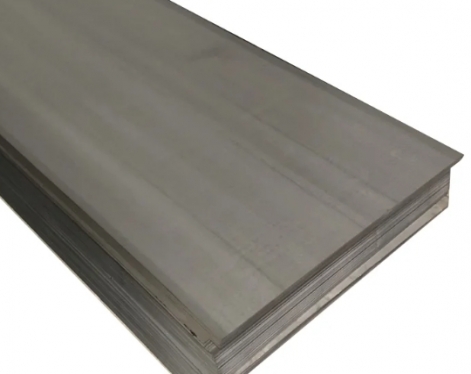The black steel pipe bending process is a processing method that bends steel pipes or metal pipes into the required shape under certain process conditions. This process is often used to manufacture pipe fittings, such as elbows, to adapt to different engineering needs and layout requirements.
Hot bending can effectively reduce the stress during bending of black materials and prevent pipe rupture or deformation. During the operation, it is necessary to control the heating temperature and time, as well as the bending speed and strength to ensure the quality of the bent pipe.

Black steel pipe hot bending steps
①Preparation
Select a suitable black metal pipe and determine the position and shape of the bend as needed.
②Heating
The steel pipe is placed in a heating device for heating, usually using flame heating or resistance heating, so that the steel pipe reaches the appropriate bending temperature.
③Bend
After the steel pipe reaches the appropriate bending temperature, special bending equipment or tools are used to apply external force to bend the steel pipe according to the predetermined bending radius.
④Cooling
After completing the bending, the steel pipe is cooled to room temperature so that it maintains the desired shape.
⑤Inspection
Inspect the bent steel pipe to ensure that its bending radius and bending angle meet the requirements.
The advantages of cold bending are: it can produce various extra-thin, extra-wide and complex-shaped profiles that cannot be produced by rolling; it saves metal materials; and the products have good mechanical properties. Commonly used processing methods include roll bending, press bending, pull bending and bending.
Black steel pipe cold bending steps
①Preparation
Select a suitable black steel pipe and determine the bending position and shape as needed.
②Positioning
Place the steel pipe into the cold bending equipment and position it to ensure the bending position is accurate.
③Bend
Use cold bending equipment or tools to apply external force to the steel pipe to bend it. Cold bending equipment usually includes pipe bending machines, bending molds, etc.
④Inspection
Inspect the bent black steel pipe to ensure that its bending angle and bending radius meet the requirements.
The mechanical pipe bending method is a relatively efficient pipe bending method. Its advantage is that it can quickly complete the bending work of a large number of black pipes. This method requires the use of special mechanical pipe bending equipment. By adjusting the angle, radius and other parameters on the mechanical pipe bending equipment, the black steel pipe can be quickly bent into the required target shape.
1.Hot bending method
Hot bending is a steel pipe processing technology that heats the black steel tube to a certain bending temperature, and then applies external force to bend it within a predetermined bending radius. Compared with conventional cold bending processes, hot bending can make steel pipes easier to bend and can achieve larger bending radii and more complex shapes.Hot bending can effectively reduce the stress during bending of black materials and prevent pipe rupture or deformation. During the operation, it is necessary to control the heating temperature and time, as well as the bending speed and strength to ensure the quality of the bent pipe.

Black steel pipe hot bending steps
①Preparation
Select a suitable black metal pipe and determine the position and shape of the bend as needed.
②Heating
The steel pipe is placed in a heating device for heating, usually using flame heating or resistance heating, so that the steel pipe reaches the appropriate bending temperature.
③Bend
After the steel pipe reaches the appropriate bending temperature, special bending equipment or tools are used to apply external force to bend the steel pipe according to the predetermined bending radius.
④Cooling
After completing the bending, the steel pipe is cooled to room temperature so that it maintains the desired shape.
⑤Inspection
Inspect the bent steel pipe to ensure that its bending radius and bending angle meet the requirements.
2.Cold bending method
Cold bending uses a special pipe bending machine or pipe bending mold to bend the steel pipe to the required angle and radius at normal temperature. Compared with hot bending of steel pipes, cold bending does not require heating of the steel pipes, so it is suitable for situations where there are special requirements for material or size.The advantages of cold bending are: it can produce various extra-thin, extra-wide and complex-shaped profiles that cannot be produced by rolling; it saves metal materials; and the products have good mechanical properties. Commonly used processing methods include roll bending, press bending, pull bending and bending.
Black steel pipe cold bending steps
①Preparation
Select a suitable black steel pipe and determine the bending position and shape as needed.
②Positioning
Place the steel pipe into the cold bending equipment and position it to ensure the bending position is accurate.
③Bend
Use cold bending equipment or tools to apply external force to the steel pipe to bend it. Cold bending equipment usually includes pipe bending machines, bending molds, etc.
④Inspection
Inspect the bent black steel pipe to ensure that its bending angle and bending radius meet the requirements.
3. Mechanical pipe bending
Mechanical pipe bending is a method of bending pipes using a specialized pipe bending machine.The mechanical pipe bending method is a relatively efficient pipe bending method. Its advantage is that it can quickly complete the bending work of a large number of black pipes. This method requires the use of special mechanical pipe bending equipment. By adjusting the angle, radius and other parameters on the mechanical pipe bending equipment, the black steel pipe can be quickly bent into the required target shape.









